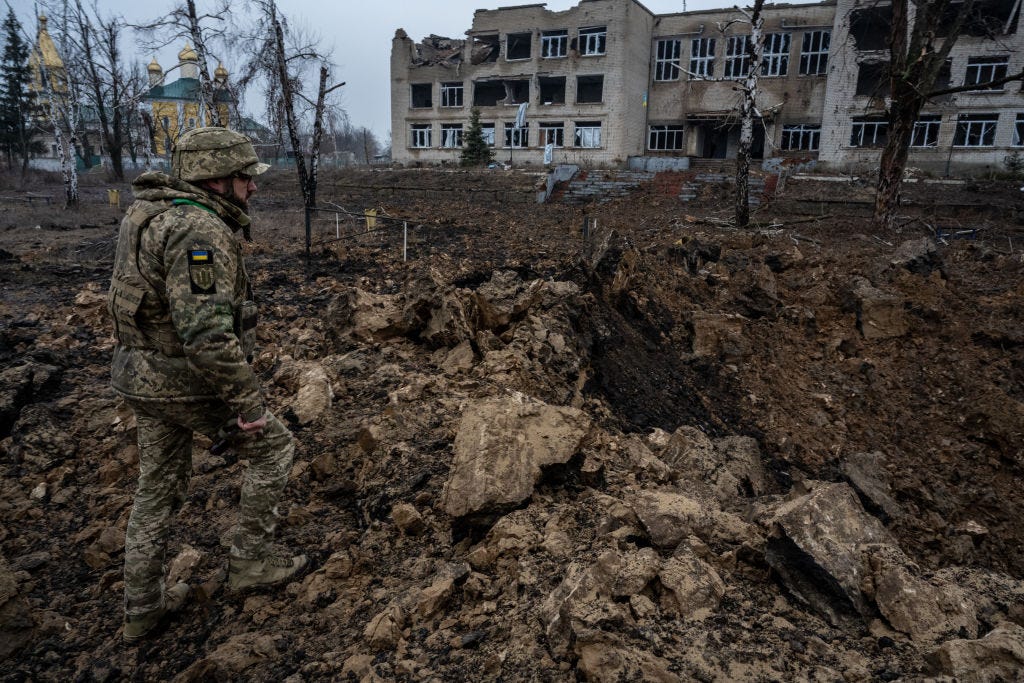- A Ukrainian soldier says they're suffering heavy casualties and are struggling in the country's northeast.
- Part of this is down to Russia's increased use of glide bombs, per The Times of London.
- F-16s could help counter this threat, but they are not expected to arrive until the summer.
A Ukrainian soldier fighting near the country's northern front line has described the menace of Russia's bombardment, telling the Times of London that they are "losing so many people, there are so many bodies we can't even bring them all back."
Describing the fight as "fucking awful," the soldier, identified by the paper as Lemur, added that Ukrainian forces in the area can't move forward.
"We can barely hold the line," he said.
According to the outlet, Lemur is fighting at Kupiansk in Ukraine's Kharkiv Oblast, around where the Institute for the Study of War has reported marginal Russian gains in recent days.
A major factor in the current Russian offensive is glide bombs, which Russia has stepped up the use of in the last three months.
These are Soviet-era bombs tricked out with guidance systems and wings enabling long-distance strikes.
As of last month, Russia was using them intensely around three flashpoints of the war: Kupiansk, the eastern city of Bakhmut, and Robotyne, a strategic southeastern village, the Kyiv Post reported.
Launched from aircraft at a distance and then guided to their target, the small radar signature and short flight time of glide bombs makes them hard for Ukraine's already-strained air defense systems to detect and shoot down.
Russia is reported to be ramping up its production of the bombs.
Glide bombs were a factor in the Russian capture of Avdiivka in mid-February, its only major success in recent months. Their impact in Avdiivka was reported to be devastating.
Ukraine does not release official casualty figures.
Maksym Zhorin, a soldier in Ukraine's 3rd Separate Assault Brigade, said in a Telegram post during that battle that glide bombs "completely destroy any position," The Washington Post reported.
"All buildings and structures simply turn into a pit after the arrival of just one," he said.
Struggling to push Russian forces back, Ukraine has fortified its own defensive lines.
In Kupyansk, frontline fighting is backed by two miles of trenches, dragon's teeth, and minefields, The Times reported.
However, these present no barriers for glide bombs.
The aerial threat has placed a new urgency on getting F-16s to Ukraine.
Mykola Bielieskov, a military analyst at Kyiv's National Institute for Strategic Studies, told the Post that the F-16s' modified air-to-air missiles could help Ukraine counter the threat.
However, the aircraft are not estimated to reach Ukrainian skies until at least the summer.
